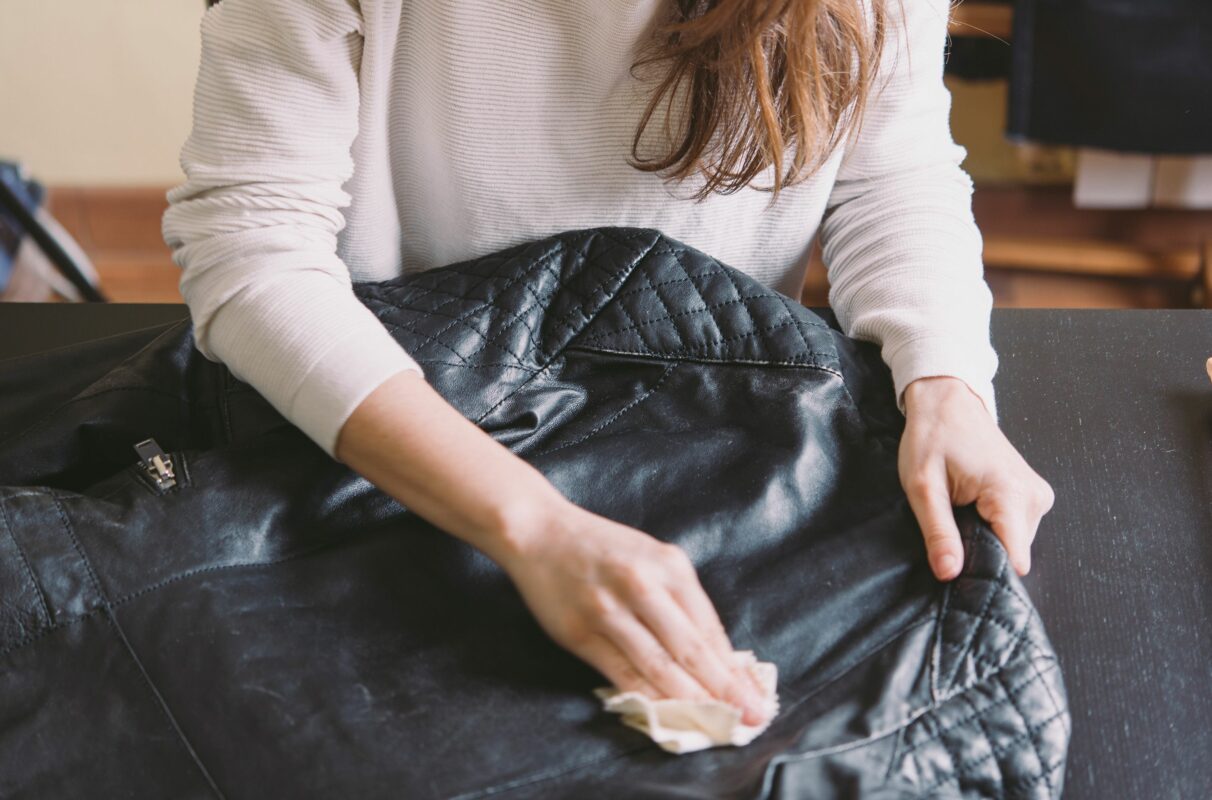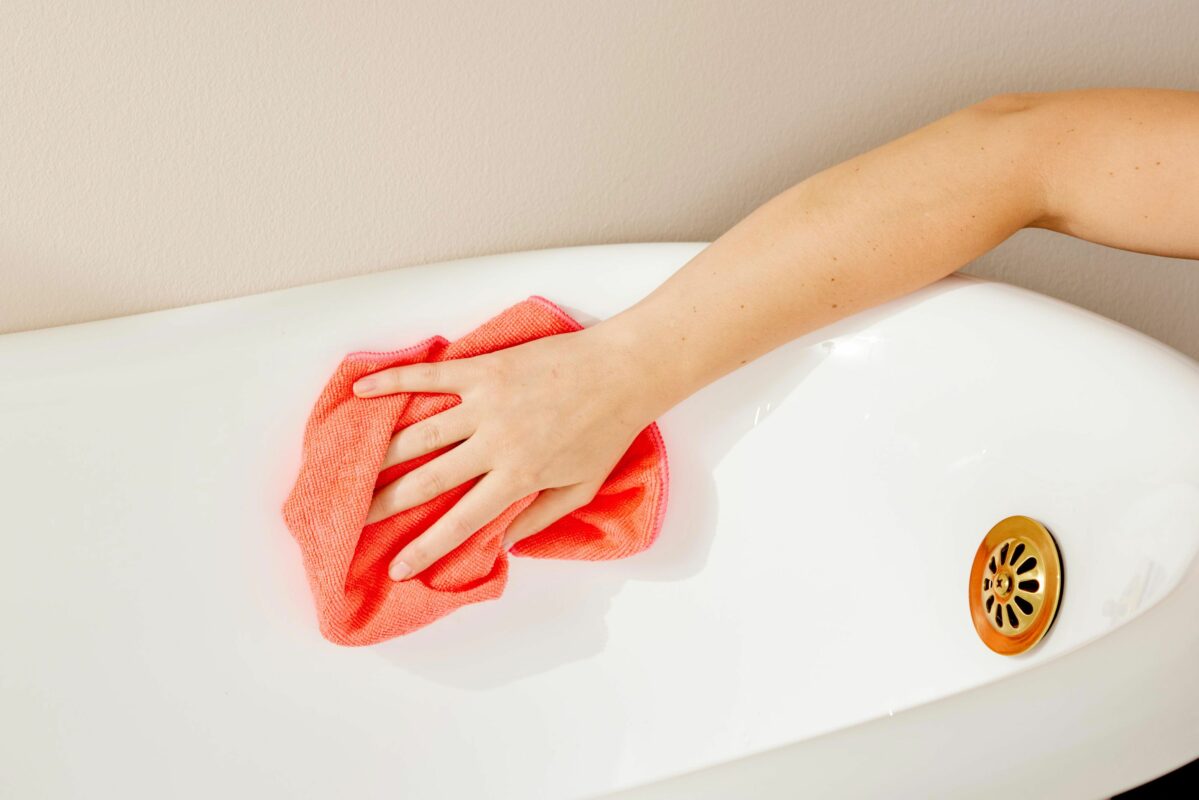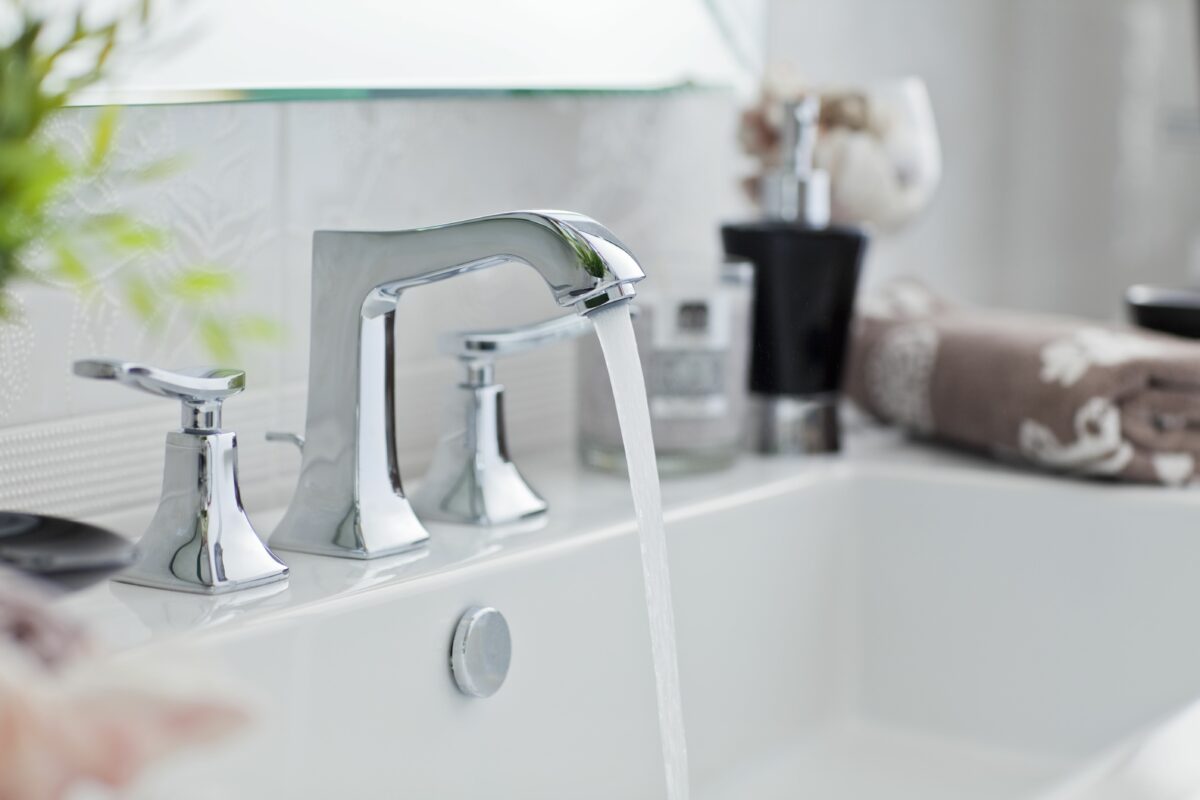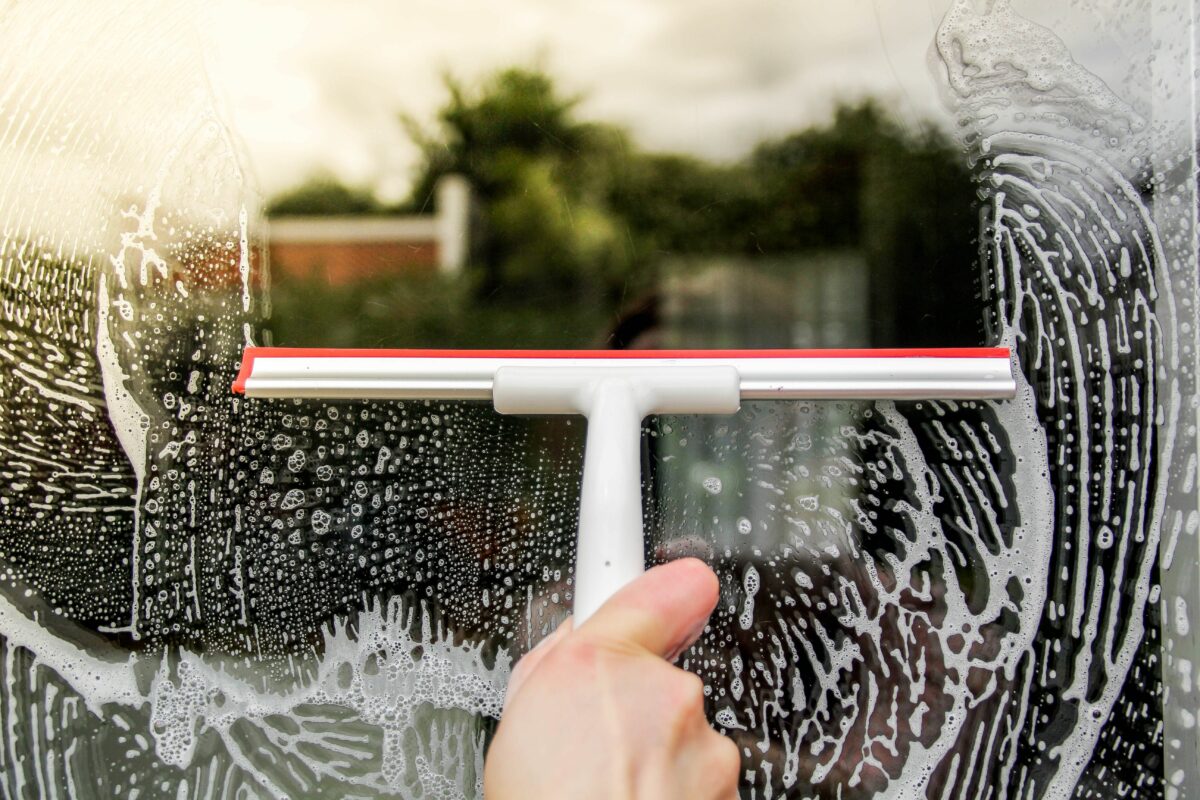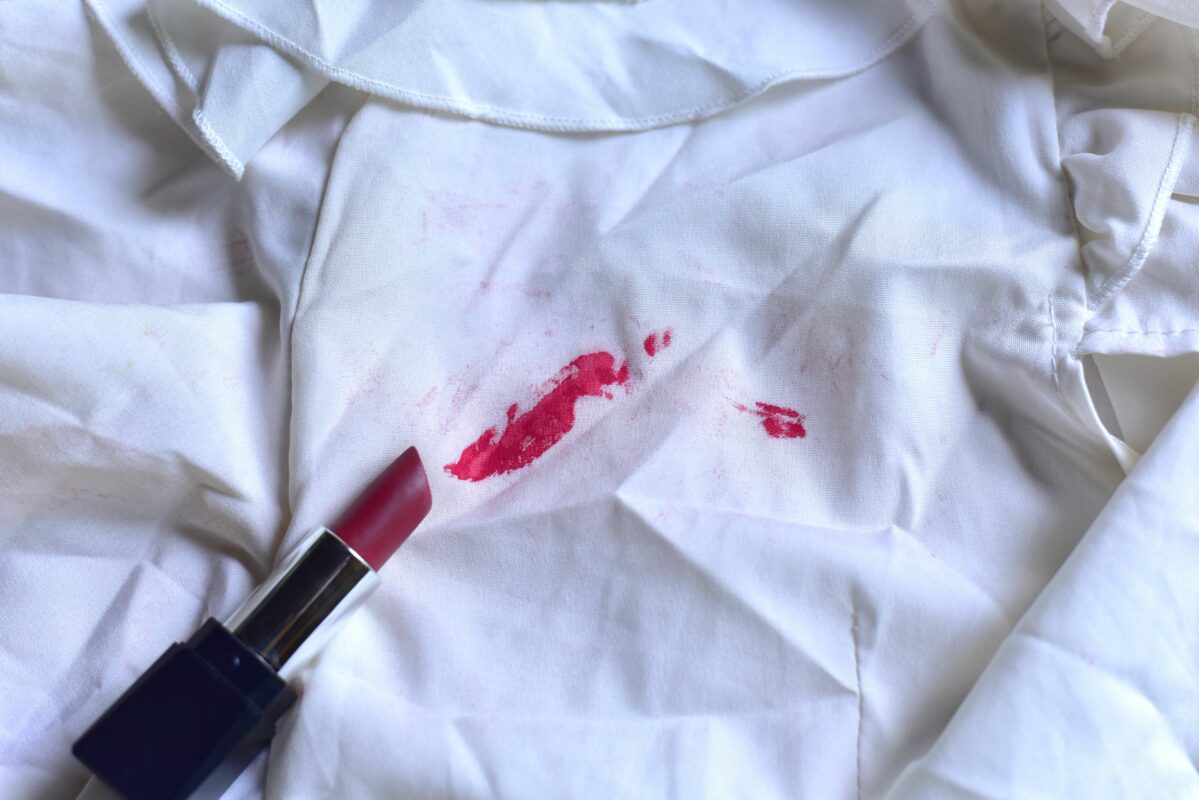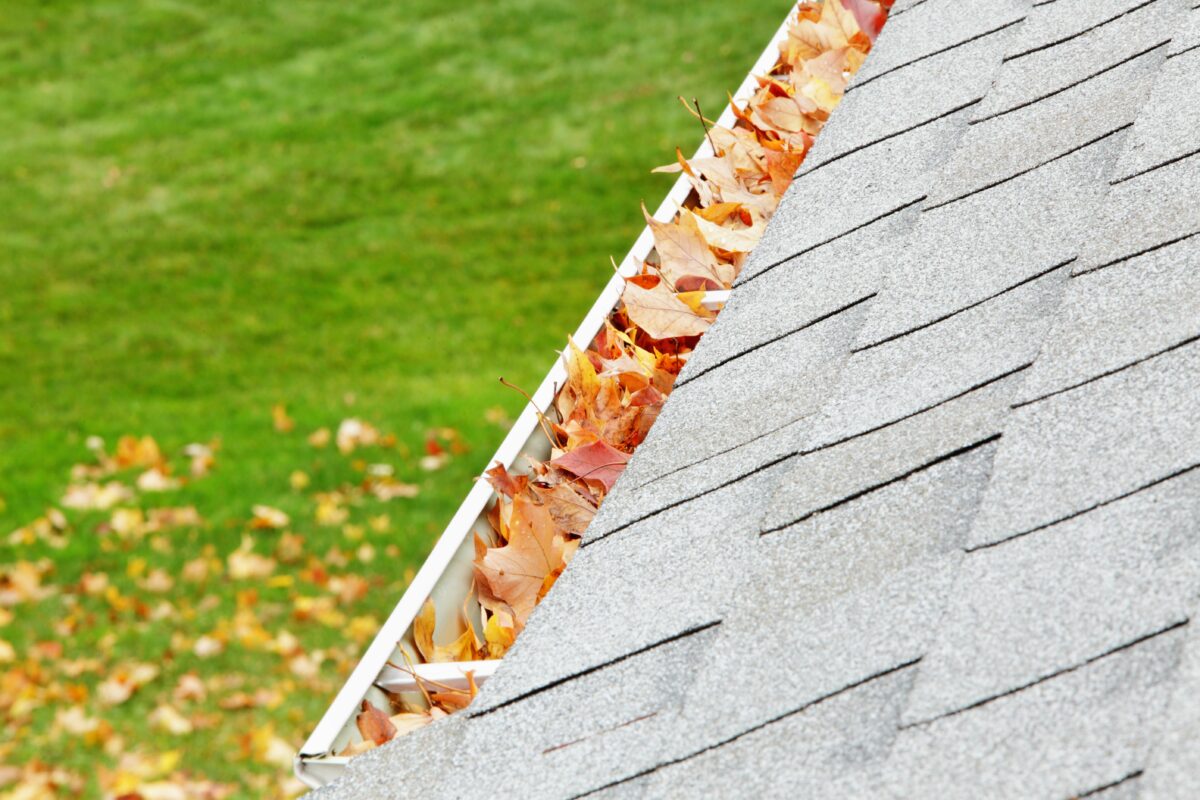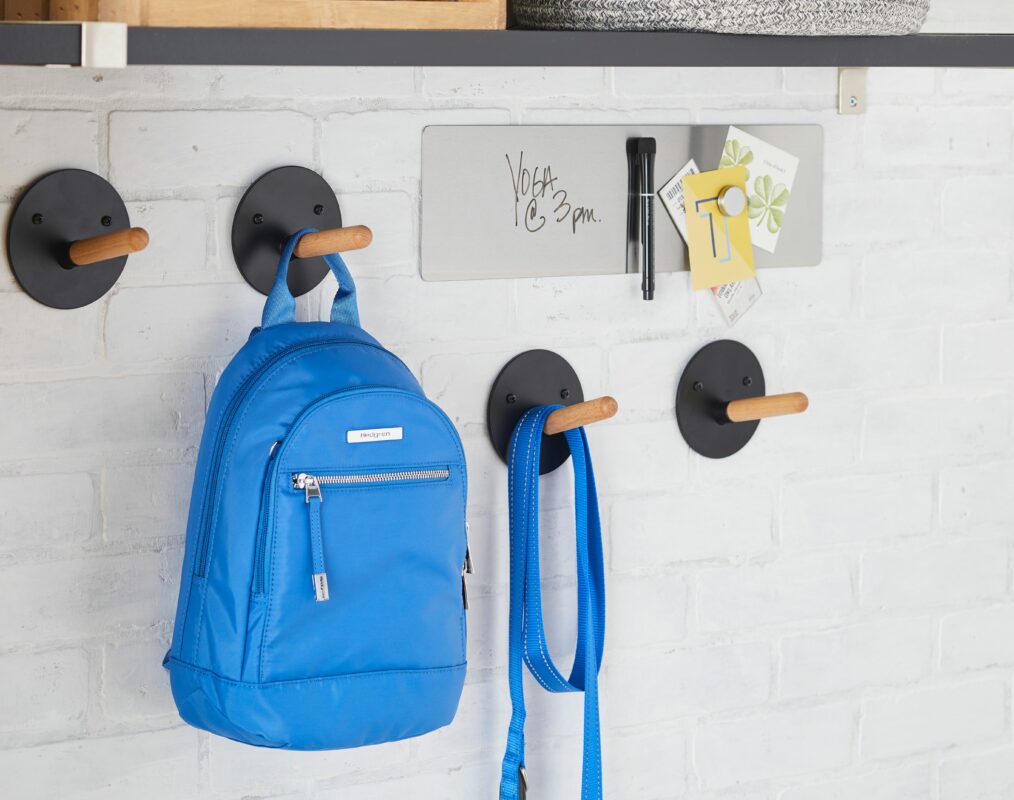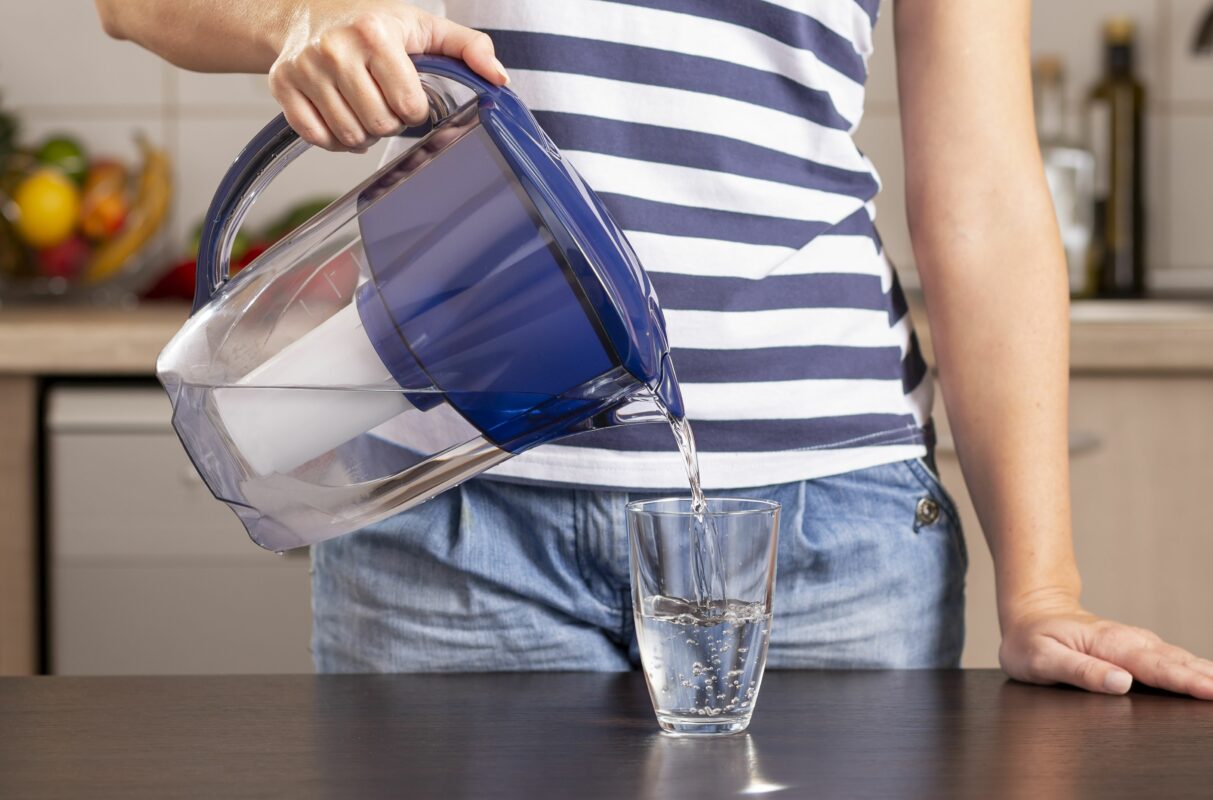Stainless steel is a sleek modern finish that looks great with nearly any kitchen color scheme. But fingerprints, smudges, spills, and splashes can make the material unsightly. Luckily, our tricks for cleaning stainless steel will help your appliances sparkle again. Learn the best way to remove water stains on stainless steel, plus how to clean stainless steel with microfiber cloth, baking soda, and more.
Getty Images
What to Use to Clean Stainless Steel (and What to Avoid)
For cleaning stainless steel as part of your routine kitchen cleaning, a simple microfiber cloth dampened with water is sufficient. When it’s time to do a more in-depth cleaning, keep rubbing alcohol, vinegar, baking soda, and even rubbing oil on hand.
Avoid using abrasive cleaners or sponges on stainless-steel appliance surfaces, as they can permanently scratch the steel’s surface. Skip the steel wool and chlorine-based cleaners, too. Some cleaning methods include using rubbing oil and essential oils. These products are great cleaning agents, but they’re also flammable. Don’t use them on your oven or other appliances that conduct heat.
How to Clean Stainless Steel
Daily care of your stainless-steel appliances will make big cleaning less frequent.
Microfiber Method
Step 1: Wipe Down Stainless Steel. For daily cleaning and removing water stains from stainless steel, a simple wipe with a microfiber cloth and water does the trick. Wet the cloth and wipe down the appliance.
Step 2: Dry and Polish. Wipe the surface again with another microfiber cloth to dry. By giving the appliance a once-over with a dry cloth, you’ll remove any excess moisture that could become future water spots. For extra shine, use a polishing rag to buff the steel.
Step 3: Scrub with Soap. You can also use a little dish soap if you feel like your stainless-steel surfaces are extra grimy. Pick a dish soap that doesn’t contain chlorine and put a drop on a cloth. Dampen the cloth with water and wring out excess water. Wipe down the surface and follow up with another damp cloth (sans dish soap), and, finally, dry the surface with a clean, dry rag.
Baking Soda and Vinegar Method
Sometimes the microfiber method needs a little support. Look no further than your kitchen pantry for a hardworking stainless-steel cleaning solution.
Step 1: Boil Vinegar and Soak Towel. To remove tough stains on stainless-steel appliances, wet a thick, clean towel with distilled white vinegar that has been brought to a boil. Make sure to use caution when handling the boiled vinegar.
Step 2: Soak and Wipe. Place the damp towel on the spot and let it sit for 30 minutes. Sprinkle with baking soda, then scrub gently until the spot disappears. Wipe the area clean with water and dry with a clean cloth.
How to Remove Stains on Stainless Steel
If there’s a stain that won’t come out no matter how hard you scrub, consider buying a stain removal product made specifically for metals. These cleaners are particularly helpful when removing stainless-steel oxidation or rust. For serious blemishes, invest in a stainless-steel scratch-removal kit, which typically combines special polishes and fine-grade sandpaper to remove the problem.
Before using a commercial cleaner or a scratch-removal kit, check out your appliance owner’s manual for instructions. Some stainless-steel appliances have special finishes that require more specific care options.
How Often to Clean Stainless Steel
Old stains and water spots are harder to tackle. Prevent them with frequent appliance cleaning. We recommend committing to daily wipe-downs with a clean, soft cloth and hot water. Also, aim for weekly cleanings with an oil-based stainless-steel cleaner and polish. This regular routine will help reduce buildup and keep your stainless-steel appliances easy to clean.
More Tips for Cleaning Stainless Steel
Clean Stainless Steel with the Grain
Much like wood furniture, stainless steel has a grain. Always wipe with the grain to loosen and remove all the dirt from those little recesses. Going against the grain can result in less effective cleaning and may even scratch the steel. To find the appliance’s grain direction, simply rub both vertically and horizontally with a soft cloth. If you feel a slight resistance, that means you’re rubbing against the grain.
How to Get Rid of Fingerprints on Stainless Steel
Fingerprints on stainless steel are almost impossible to avoid, especially if you have little ones who like to touch everything in sight or budding chefs who pay no mind to the mess in the moment. Luckily, there’s an easy solution to rid your stainless-steel appliances of fingerprints. Simply drop a little rubbing alcohol on a soft cloth and rub over the stains. The alcohol will zap the oily residue and grime left by a human hand.
Add Shine to Stainless-Steel Appliances
Make your stainless steel extra shiny with a secret ingredient: lemon oil. Just put a few drops of the oil on a clean cloth and rub it into the surface. If you can’t find lemon oil, you can use olive oil as a substitute. Aim to give your stainless-steel appliances this oil treatment once a month. And remember: Don’t use this method on an oven or appliance surfaces that conduct heat.
Now that you know how to clean stainless-steel appliances, you don’t have to dread fingerprints. With a little bit of simple routine cleaning, some minimal elbow grease, household ingredients (vinegar and baking soda straight from the pantry), and special care items for regular maintenance, you can ensure cleaning stainless-steel appliances is a breeze and sparkling surfaces can be a real-life thing, too!




